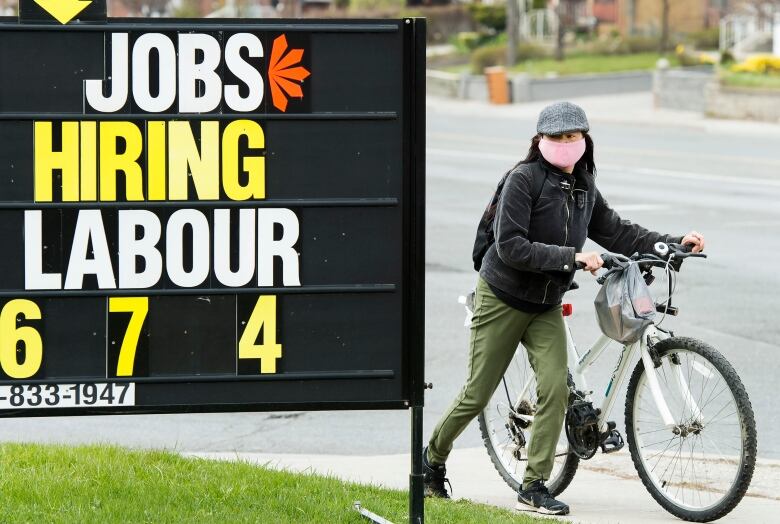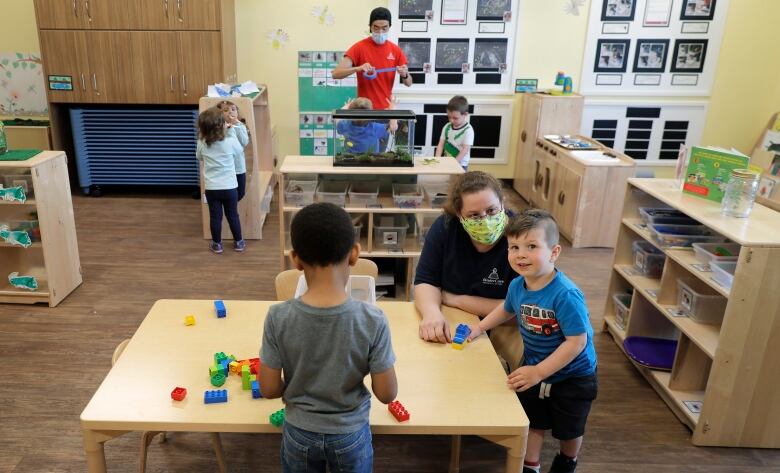Walking a 'tightrope': Bill Morneau and the path out of the pandemic economy
Turning out the lights on much of Canada's economy was easy compared to what comes next

Now comes the hard part.
Finance MinisterBill Morneau has, in the space of a few months, approved the spending of nearly $200 billion in federal aid in a deliberate effort to shut down huge portions of Canadian society so that a contagious disease could be contained. Whole new programs have been created and adjusted in a fraction of the time normally required for governments to design and implement new initiatives.
While the virus still poses a threat, the goal of governmentsnow is to restart the economy or at least as much of it as can be safelyrestarted. Then, at some later date, it will be time to repair and rebuild.
"What I've been saying to to the prime minister and to my colleagues is that as hard as it's been over the last few months ... we'll look back and say that it was tenseand urgent, but some of the really tough choices will still be to come," Morneau said in an interview this week.
"Because we'll need to think about where we invest and how we support people without creating bad incentives. So those are going to be tough, tough choices."
Wake-up call in Riyadh
Morneau said the scale of the crisis started to become clear to himduring a meeting of the G20's finance ministers in Riyadh, Saudi Arabia in late February.
"I literally watched the Italian finance minister as he got a note to his desk telling him about the outbreak they had in northern Italy," Morneausaid. "Within the next hour or so, he raised his hand to say, 'This looks like it's going to be much more significant than we could have imagined.'"
Morneau'soffice was in the late stages of finalizing the federal budget at the time; the plan was to dedicate a chapter of that budget toCOVID-19 measures. In short order, however,the pandemic shoved aside all plans for a budget.
Changes to Employment Insurance were followed by the creation of two new benefits to help those who couldn't work. A week later, those two benefits were subsumed by the new Canada Emergency Response Benefit. A wage subsidy to cover 10 per cent of an employee's earnings was introduced. Widely criticized as too modest, the wagesubsidy was subsequently increased to75 per cent.
Both the CERB and the Canadian Emergency Wage Subsidy required the design of entirely new systems to deliver the funding.
How fast is fast enough?
In its most recent report to the House of Commons finance committee, the government listed 51 initiatives totalling $174 billion in direct supports for individuals and businesses.
All along, there were complaints that the Liberals weren't moving fast enough or far enough. In April, the Globe and Mail reported grumbles from within government that the Department of Finance had been slow to meet the moment.
"I think when we look back five or ten years from now at the story of the pandemic response, I think the story will be that we acted in scale and with speed that was unfathomable for governments prior to this pandemic," Morneau said.
"There were literally midnight calls with the people at the Canada Revenue Agency [or] the people who deliver the Employment Insurance system, thinking through every possible way, including the banking system, of getting funds out."
Both things could be true, of course. The government may have moved with unprecedented speed and scale and it may have been better off moving even faster.
Successes and failures
Asked if there's anything he wishes he'ddone differently, Morneau points to the federal government's commercial rent reliefprogram with the provinces, which struggledto gain traction. Itmight have been more effective out of the gate, he said, if ithad beencombined with "restrictions on commercial evictions for this period, which would have allowed it to to start with a bigger bang."
The successes and failures of the Liberal response will be debated foryears to come, but recent analysis by economists at Scotiabank estimated that federal aid at least provided a backstop for the economy turning what could have been a drop of 10.3 per cent in real GDP into a drop of 7.3 per cent.

Morneau will release a new official deficitestimate on Wednesday, but the Parliamentary Budget Officer has projected a shortfallof $256 billion a level of spending not seen since the Second World War.
"I think the essential frame from my standpoint [is] we took on the debtso Canadians didn't have to," Morneau said. "We were in the position to take on the investments required because we had the capacity and the ability to deliver at scale that would only be possible for the federal government."
Scotiabank's analysis suggests thatnot spending that money would have led to a weaker economy and an only slightly lower level of government debt. But Conservatives argueMorneau shouldn't have run a series of deficits in the four years leading up to the current crisis.
An unlikely politician
Morneauhas neither the politicalcachetnorthe record of balanced budgetsofhis predecessors Paul Martin and JimFlaherty. He has stiffly struggled with the public business of politics (Conservative finance critic PierrePoilievrecontinues to tormenthimat every available opportunity)whilehaving to defend thedeficits from 2015 to 2019.
Whatever elseMorneaucould say about the federal government's actions, it wasn't obviousthat he had put it on a fiscally unimpeachable pathbefore the pandemic hit.
His lack of political polish has been a hindrance forthe government. But Trudeau has kept Morneau in place; in the last 50 years, only Martin, Flaherty and Michael Wilson have held the job longer. And Morneau has had his moments negotiating an expansion of the Canada Pension Plan, new health accords with the provinces and the purchase of the Trans Mountain pipeline.

Those who have worked with Morneaudescribe a serious and analytical minister; one Liberal source described him asa "Blue Liberal" who leans toward fiscal prudencebut is not ideological. They say he's said "no"to more spending requests than he's given credit for publicly, but has also learned to seek consensus when ministers present him with new proposals.
Thattask of balancing priorities is now a massive one. "I think the tightrope," said Mike Moffatt, an economist with the Ivey Business School and the Smart Prosperity Institute, "is getting people back to work but in a safe way."
The government built a system to help people stay home. Now, with the spread of the virus tamped down, it wants to get as many people as possible working again. In theory, the CERB could act as a disincentive to work. But if the supports are withdrawn too quickly, many could beforced into unsafe work situations.
Kevin Milligan, an economist at the University of British Columbia who recently joined the Privy Council Office as a special adviser, has laid out a plan that would seeCERB recipients transferred to the EI system, with special attention paid to parents of young children, the self-employed and those with health concerns.

"Our vision is that the wage subsidy needs to continue to support businesses as they get back to work and, as that happens, the reliance on the CERB and the Employment Insurance system will reduce," Morneau said. "But we do need to continue to recognize that there'll be a significant number of people that won't get back to their previous situation immediately.
"So we need to transition the CERB and the EI system so that we have the ability to support those people. How we exactly do that is something we're working on. But clearly, we want to use the existing infrastructure of our Employment Insurance system to support people who need retraining and to think about what their next steps are."
A stop-and-go recovery
The wage subsidy, Morneau said, could be tweaked both to expand the number of businesseseligible for it and to adjust the amount of revenue that a company is allowed to earn.
"As we redesign the wage subsidy, we're thinking about broadening the number of organizations that can make use of that to get them closer and closer to their pre-pandemic revenue," he said. "And that will allow them to bring people back to work in a way that makes sense for their business without the disincentive."
Moffatt said the restart is unlikely to be "linear" that parts of the economy could be turned on and off as outbreaks and new infections occur. A second wave of COVID-19 is still a significant threat.
But even if the federal government manages to adjust its support programs successfully, many working parents will be unable to return fullyto work if they lackaccess to child care and schooling services that fall under provincial jurisdiction.

Morneau said he's "worried" about child care. "That's why we've put in the discussions with the provinces a concern around child care, with specific dollars that we think need to be allocated to creating the necessary supports," he said.
"Obviously, this is going to be something that will be dynamic, because the situation in the fall is going to be very much related to the health outcomes.And it's going to have to be collaborative between the federal government and the provinces and businesses to a certain extent ..."
The rebuilding phase
The federal government has offered the provinces $14 billion to cover costs related to personal protective equipment, testing and tracing, and child care. But provinces have complained about the sums being offered and the federal government's insistence onthe funds beingused for specific purposes.
The restart should eventually set up a recovery phase, when the damage can be assessed and a concerted effort to rebuild can begin. That will present another profound challenge.

The economy is not likely toreturn to full power immediately. Some businesses and jobs will be permanently lost. There will be demands to address boththe vulnerabilities the pandemic exposed(long-term care, child care, precarious work and income inequality) and to seize the moment to build for the future (with a focus on green investments). All that will contend with a need to show that the federal government's debt can be kept within a manageable range.
Morneautalks about investingin "the gaps that we've unearthed"and paying attention to those in vulnerable positions (young people, women and those in low-paid jobs),while looking ahead to where the Liberals think the economy needs to go."You've heard us talk about investing for a green economy," he said. "We know that'll be important."
'Selling' the recovery plan
The Scotiabank report noted that Canada's net and gross government debt still compare favourably to other G7 countries, but one major rating agency has now downgraded Canada's credit rating. The task of managing and selling the government's approach to the deficit will be a significant test of Morneau's ability to project strength and credibility.
"Morneau's actually going to have to really sell what he's doing," Moffatt said, "because I don't think there is going to be an obvious answer. There is going to be a lot of debate about what should our emphasis be, on reducing the deficit relative to stimulus spending and helping out portions of the economy that are still hurting."
Tax increasesare "not on our agenda" becausethey might hold backthe recovery, Morneau said.
The shape of future spending restraint is less clear. The Liberals came to power arguing that prioritizingbalanced budgets above all else was misguided.
The Conservatives presumablywill argue for a harder line on the deficit, butMorneau suggested the Liberals' post-pandemic approach will be broadly in line with their pre-pandemic philosophy.
"What we did with the first four years of government is we made those investments in people. We created the employment growth together with Canadians. That got us into a very strong position," he said."We did it while being fiscally responsible, reducing the debt and the deficit as a function of our economy.
"That's why we want to get back to.We want to get back to making those investments that are going to enable us to grow together and create opportunities. Obviously, we've had a huge shock but the only way to deal with that is if we get back to investing for growth and for employment and for the kind of economic opportunities that come from that. That's the recipe."
That might sound easy.It won't be.













_(720p).jpg)


 OFFICIAL HD MUSIC VIDEO.jpg)
.jpg)



























































































